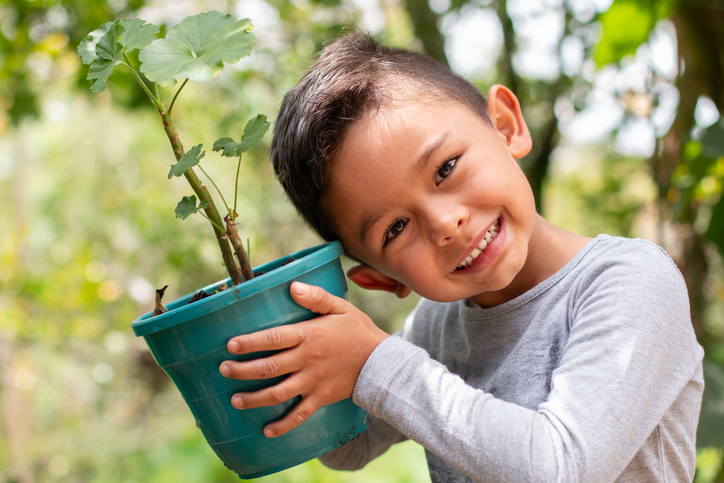Category: Social Issues
The Mental Health Gap: What Parents Miss and Teens Need
September 1, 2025

Your teen says they’re fine. But they’ve stopped texting friends, spend more time in their room, and their grades are slipping. Could you spot the signs if they were struggling? Only 58% of U.S. teenagers feel they get the emotional support they need—yet 93% of parents believe they’re providing enough.
Findings like these show that parents may not always realize when their child is struggling. Young people today face different challenges than their parents and previous generations did. More than ever, parents must understand the unique pressures young people are struggling with today.
Challenges Faced by Teens
Nearly 10% of all U.S. kids aged 3 to 17 experience anxiety, while 5% live with depression. A few causes are listed below:
- Many young people are dealing with packed schedules, the pressure to succeed in academics, sports, and extracurriculars, and the uncertainty of what comes after graduation. The pressure to excel can lead to burnout.
- With in-person learning, the fear of school shootings can create a general sense of day-to-day unease.
- Students who remember the pandemic lockdown may have posttraumatic stress from virtual learning and social isolation.
- Social media has introduced young people to near-constant comparison, leading to low self-esteem. Body dissatisfaction is leading to a rise in eating disorders.
- Concerns over climate change can also lead to feelings of hopelessness.
Warning Signs
As a parent, you have a good sense of what your child’s “normal” looks like. In addition to the more striking symptoms, such as mood swings, angry outbursts, or being more tearful than usual, you may notice:
- Changes in eating habits, weight, sleep, or other routines
- Loss of interest in the things they once enjoyed or quitting activities
- Withdrawing from close friends or family
- Academic struggles that seem different or more intense, such as a refusal to complete assignments
- Becoming more visibly worried or expressing constant worry
- Any signs of substance abuse or evidence of self-harm, such as cuts, burns, or bruises
Just because your child exhibits any of these symptoms does not mean they are experiencing a mental health crisis. Biological changes, including hormonal shifts that all teenagers must go through, can affect their mood and school performance.
“It’s kind of hard because these things correlate with puberty,” says Theresa Nguyen, vice president of policy and programs at Mental Health America. “It gets hard for parents because this period of time is so muddy.”
Converse Differently
Checking in with your child is an ongoing process, not a one-time occurrence. Normalizing regular conversations with your child supports their mental health and also gives them the foundation to come to you when they need help.
Kids avoid touchy subjects, especially if they fear being lectured or punished. Make sure your children know they can come to you with anything. Create a safe space for them by remaining approachable and nonreactive. Routine moments, such as car rides or dinner times, can be opportunities for discussion.
Avoid forcing conversations or asking direct questions like, “What’s wrong?” Instead, ask about specific things at school or what they might be looking forward to. They will be more willing to open up if they do not feel interrogated. Try listening more than you speak and resist the urge to give advice immediately.
The goal is not to fix everything for them, but to make sure they know they are supported. “As parents, our instinct is often to jump in with advice, but it’s very rare that that’s what teens are looking for,” says Lisa Damour, a clinical psychologist. “Teenagers often feel supported not through a conversation but through our steady presence. It’s about being around and available.”
Parents can show their teen how to care for their mental health by modeling those healthy behaviors themselves.
- Encourage good physical habits. Eat well and encourage exercise, both of which can be activities you do together. Every family member should have a bedtime and sleep routine.
- Limit screen time and social media. If your teen is resistant, approach it together as an experiment to see if it’s beneficial to take a break.
- Find activities that you enjoy and help them do the same. Ideally, you can find a few things to enjoy together, such as going for walks or watching movies.
“Lead by example,” advises Nguyen.
Your child’s pediatrician can help with any mental health concerns. They can explain treatment options, including medication, and refer you to a specialist for evaluation. Talking with a licensed mental health professional, for instance, can provide teens with a safe and judgment-free zone to process emotions and develop coping skills.
Your child’s care team can develop a crisis plan involving the steps to take if symptoms worsen. There are also courses for parents who want to learn more about mental health first aid. Teens who need to speak with someone immediately may always call The 988 Suicide & Crisis Lifeline or text “TALK” to 741741.
By staying organized, parents can create more time for family. “The single most powerful force for adolescent mental health is strong relationships with caring adults,” says Damour.
Your teen doesn’t need you to have all the answers. They just need to know you’re there every day, without conditions.
At Insureyouknow.org, parents may keep track of their child’s schedule, medical records, and other essential documents.
Celebrate Earth Day with Five Simple Ways to Protect the Planet
April 15, 2025

Twenty million Americans celebrated the first Earth Day in 1970, and by 2020, that number had grown to over one billion people worldwide. April 22 marks a moment for us to ask what we can do to help the environment. A quick dip into the internet can leave us feeling overwhelmed, but there are things that we, as individuals, can do to make a difference. Here’s a quick list to get you started:
Eat Sustainable
We often think of eating sustainably as difficult or expensive. However, current research shows that what you eat can be as or more important than where your food was produced. While food production leads to 25% of the world’s emissions, transportation accounts for less than 10% of this amount. Thus, avoiding highly intensive foods like beef can make as much of a difference as joining a CSA (Community Supported Agriculture) program which supports local family farms by committing to purchasing produce and meats grown on the farm. Another great alternative is to take advantage of home delivery services that bring imperfect produce to your door, reducing the amount of waste from supermarkets.
Mending and Upcycling Clothing
Each year, 92 million tons of clothing get deposited in landfills. This fact alone turns mending your clothing into a smart way to help protect the planet. A quiet evening spent darning socks or replacing a shirt button can be enjoyable, but new trends are transforming mending into a fashion statement. Kate Sekules, author of Mend and a clothing mender, states that noticeable repairs used to be despised. “These days, fashion is quite in love with imperfection and deconstruction and patching,” she explains.
A quick tour through your closet will reveal pieces that can be upcycled for a new look and garments that can be donated instead of tossed. Research your local area organizations and schools for clothes closets and thrift stores that will recycle your attire. Even sneakers can get a new life through nonprofits like GotSneakers with the added value of keeping old shoes out of the landfill.
Walk More & Drive Less
Transportation is the source of the largest section of greenhouse gas emissions. One great way to reduce the amount of driving is by combining trips. Also known as trip-chaining, gathering up errands and doing all of them on one more extended trip saves gas and time. Win-win!
Reduce Plastic Usage
These days, most store products are wrapped in some form of plastic packaging. Eliminating it from our lives feels almost impossible. The Zero Waste Movement seems like a great idea, but challenging to implement. Reducing waste by 10% however feels achievable. “Zero waste isn’t an all-or-nothing proposition,” says Anne-Marie Bonneau, author of The Zero Waste Chef. “Some of the changes necessary to reach that 10 percent goal, which just about everyone can do, won’t hurt one bit.”
Some quick tips include using cloth bags when purchasing loose produce and bringing your own glass or metal containers to refill with bulk items.
Implementing just one of these strategies begins your journey to protecting the planet with a tiny step. This will hopefully result in significant change for the Earth.
InsureYouKnow.org
Half of all recyclables collected in the US are made up of paper, and most often paper used to document sensitive information gets shredded and burned. InsureYouKnow.org can help you get started by assuring secure and safe storage for your digital records. Storing this information digitally and shifting billing and other communications from paper to electronic means reduces paper use at the source.
Elections 101 for Seniors
September 15, 2024

It can be difficult to get to the polls no matter your age, but that doesn’t mean anyone should forego their right to vote. In America, voting is a right possessed by every citizen and is one that should not be taken for granted. In many ways, voting is easier than ever, and senior citizens’ votes count more than most. So if you’re an older adult or family member of a senior citizen, it’s important to learn about all of the ways to vote in your state.
Seniors Actually Have the Voting Advantage
According to the American Association of Retired Persons (or AARP), a recent poll showed that voters aged 50 and over will decide the 2024 elections. People over the age of 65 make up the most reliable voting group, and the group with the largest voter turnout has the power to sway the election. The Pew Foundation found that voter turnout during the 2020 presidential election was at a decades-high level, with more than 158.4 million people, or 62% of U.S. citizens aged 18 and older, coming out to vote.
Since U.S. voter turnout actually increases with age, particularly during presidential elections, political campaigns often target older voters. While younger voters can be motivated by certain candidates, older generations have paid consistent attention to long-term policy issues. Senior citizens are especially concerned about changes to Social Security and Medicare, which serve as strong motivators for them to vote.
Seniors Have a Lot to be Motivated About
Senior citizens are the recipients of Social Security and Medicare, which both directly affect their finances and hence make them particularly attuned to policy changes. If they think one candidate winning the election may result in cuts to these programs, that’s a huge motivator to vote. In addition to Social Security and Medicare, the AARP poll found that seniors are also concerned about threats to democracy, the rising cost of caregiving, and the high costs of prescription drugs.
Because of these concerns, older voters view the government as playing a significant role in their lives. Senior citizens tend to be more well-informed about political issues than their younger counterparts. “Interest groups like the (AARP) and others serve to organize for the interest of senior citizens,” says Cleveland, Ohio law professor Atiba Ellis. “Other age demographics don’t have interest groups that seek to motivate participation from across an entire age demographic.”
Often, senior citizens have been members of their community for a long time. The longer someone has been a resident has a direct correlation to feelings of being tied to and invested in their communities. These strong social ties contribute to higher voting rates. Older voters are often more interested in the future of their neighborhoods, so they become politically engaged. “Many older Americans serve as poll workers or volunteer in campaigns,” says director of pre-law at Duquesne University in Pittsburgh Kristen Coopie. “These types of engagement naturally lead to their participation in elections.”
There’s Always Absentee Voting, Mail-In Ballots, and Early Voting
Absentee voting is made available for people who can’t make it to the polls on election day due to a disability or reasonable inability to make it. In order to absentee vote, you must register to do so and request an absentee ballot. When you request an absentee ballot, you must choose from a list of accepted “excuses” to not vote in person. In some states, simply being 65 or older is a valid reason for requesting an absentee ballot. In states that don’t allow age itself to be a reason, seniors may still qualify under another reason, such as illness or disability, so it’s definitely worth looking into. Many states even offer no-excuse absentee ballots, where you may request an absentee ballot without providing a reason at all.
Voting by mail makes it possible to vote when it might be impossible or difficult to make it to the polls. As long as you’re registered to vote and your state offers mail-in ballots, then you may be able to conveniently vote by mail. Your local voter registration office will know if your state offers mail-in ballots. Even before the pandemic, Washington, Oregon, Utah, Colorado, and Hawaii voted by mail, so if you live in one of these states, your ballot is automatically mailed to you. If you can vote by mail and choose to vote, make sure you request your ballot early and mail it in on time.
If you’re not sure about your state’s rules around absentee voting and mail-in ballots, Senior Living has compiled a list of states and what each offers their voters.
If it’s still possible for you to go to the polls or you’d prefer voting in person, then early voting allows you to exercise your right to vote and avoid the crowds. Early voting can provide a sense of relief that you’ve taken care of voting ahead of time and don’t need to worry about missing out on election day. Early voting locations and times will differ from those on election day, so just check local calendars beforehand to find the poll that will work best for you.
Help Getting to the Polls
Your state’s voter registration office wants everyone to vote and will likely be a wealth of resources for you in getting your vote cast. For instance, if getting transportation to the polls or getting into the polls is a concern for you, they will likely know which voting locations will offer curbside voting, as well as be willing to help you find transportation to cast your vote. For instance, the National Council for Aging partnered with Lyft during the 2022 midterm elections to provide free rideshare coupons for seniors needing rides to the poll. Seniors may also ask their family members or caregivers for help getting to the polls on election day or during early voting periods.
Insureyouknow.org The right to vote for every American, including seniors, is vital to protecting our democracy. While it can be an added to errand to get your vote in, it’s one that can be immensely fulfilling and should be thought of as a privilege rather than a tedious to-do. If you’re a senior concerned about getting to the polls or getting your vote cast, contact your state’s voter registration office with your concerns. With Insureyouknow.org, family members and caregivers can keep track of their voter’s registration, scheduling, and transportation needs. This year, make voting a family priority by planning to vote together during the upcoming 2024 elections.
